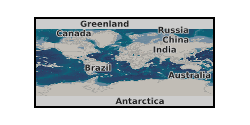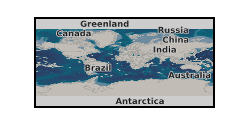Friction (geomechanics)
Type of resources
Topics
Keywords
Contact for the resource
Provided by
Years
Formats
Representation types
Update frequencies
-

The data are from a suite of friction experiments performed on simulated fault gouges comprised of clay-quartz mixtures, sheared in a direct-shear arrangement. Some experiments were performed on gouge layers comprised of adjacent patches of kaolinite-clay and quartz (i.e. heterogeneous gouge layers), whereas others were performed on homogeneous mixtures of the two materials (i.e. homogeneous gouge layers). More information on the different types of experiment is provided in the accompanying metadata for this dataset. The relative proportions of clay and quartz were varied in different experiments. All experiments were performed at an effective normal stress of 40 MPa. The sliding velocity was stepped between 0.3 and 3 microns/s every 1 mm of displacement to calculated the rate-and-state friction parameter (a-b). The evolution of shear stress was monitored with increasing displacement (up to a maximum displacement of 8.5 mm).
-

Friction coefficient and frictional stability (rate & state parameter) data for triaxially compressed direct shear experiments on kaolinite-rich china clay and Mg-montmorillonite fault gouges (<2micron grain size). A total of 19 raw experimental datasets are presented as detailed in the index files: 13 on kaolinite-rich china clay, and 6 on cation-exchanged Mg-Montmorillonite. The raw data files, logged at either 1 or 2Hz, comprise confining pressures, upstream and downstream fluid pressures, force experienced by the direct shear assembly during triaxial compression, and absolute volumes of the confining pressure and fluid pressure reservoirs. Data is provided as measured by gauges in the pressure vessel in Volts, and also as calculated in MPa, kN and mm3. Also presented are the outputs of MATLAB models run to simulate the rate and state parameters k, a, b, dc and f0 for each experiment, with error data presented as 2sigma and standard error values. Parameters were determined using a non-linear least-squares fitting routine with the machine stiffness treated as a fitting parameter (c.f. Noda and Shimamoto, 2009). Data were fit by a single set of state variables (a, b, dc) with a linear detrend. Also presented are the outputs of Specific Thermogravimetric Analyses on kaolinite-rich china clay and Mg-montmorillonite.
-

UKGEOS and Core Sample Analysis. Geomechanical testing was performed to determine triaxial compressional strength, tensile strength, frictional strength and permeability of sandstones, siltstones, mudstones and coals from eleven depth intervals within the GGC01 borehole, UK Geoenergy Observatories (UKGEOS), Glasgow, United Kingdom. Frictional strength tests were also performed on cuttings samples of sandstones, siltstones, mudstones and coals from the GGA08 borehole, Glasgow, United Kingdom. In total twenty-three tensile strength tests were performed on ten sampled intervals, and seven porosity measurements pre-and post-failure were taken. Nine triaxial compressive strength tests and twenty-one frictional strength tests were performed, with permeability measured both before and after failure or shear respectively. From compressive strength tests we also determined the Young’s modulus and Poisson’s ratio. Results of X-Ray Diffraction are also included in the dataset.
 BGS Data Catalogue
BGS Data Catalogue